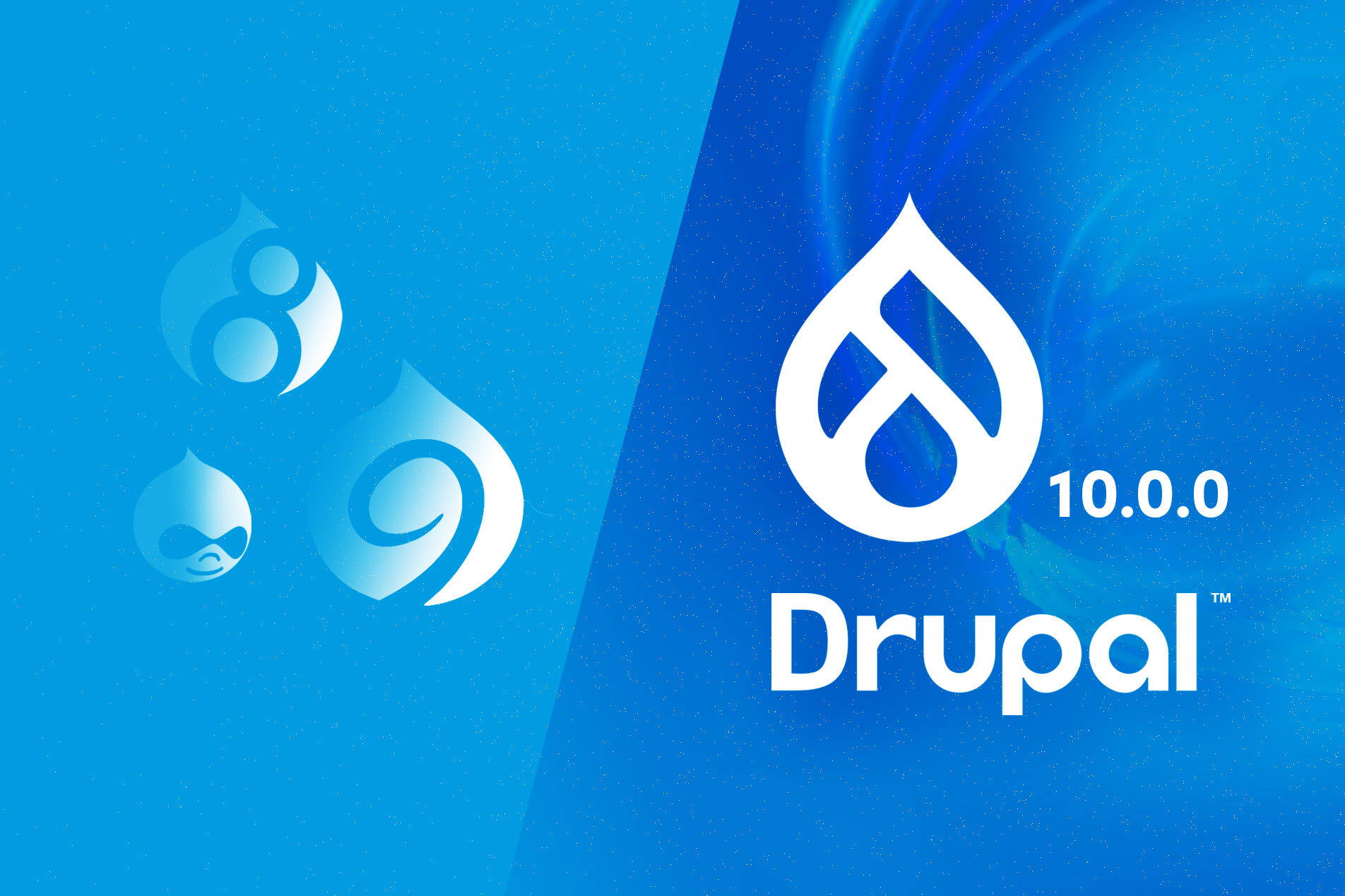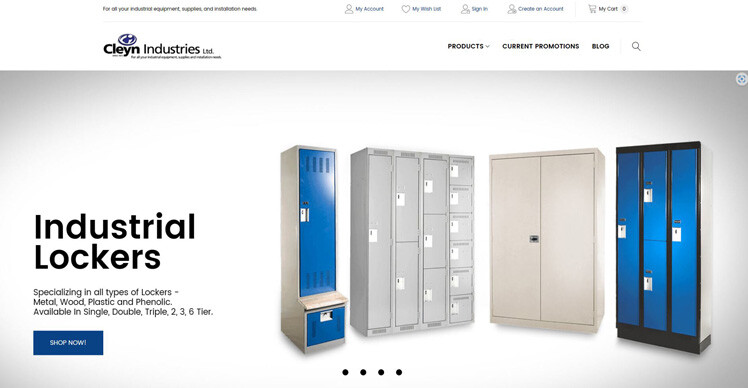eCommerce AI | Web Apps | AR/VR Software – ECA Tech
- Home
- Drupal 10: The Best and Newest Updates
Drupal 10: The Best and Newest Updates

September 1, 2024 - Technology
Drupal, a versatile and powerful content management system (CMS), has long been a popular choice for developers and organizations seeking a flexible and robust platform for building websites and applications. Through continuous innovation and community contributions, Drupal has solidified its position as a leading CMS in the digital landscape. With the release of Drupal 10, the CMS has taken significant strides forward, introducing a host of new features and improvements that cater to modern web development needs.
Some of the key updates in Drupal 10 include improved accessibility features, enhanced security measures, and better support for headless architecture. In this comprehensive guide, we will explore the best and newest updates in Drupal 10, highlighting how these changes enhance the platform’s functionality, usability, and performance.
Whether you are a seasoned Drupal developer or new to the platform, this guide will provide valuable insights to help you leverage the full potential of Drupal 10.
- Improved accessibility
- Enhanced security
- Functionality
- Better performance
7 Newest improvements
1. Introduction to Drupal 10
Drupal 10, officially released in December 2022, represents a major evolution from its predecessor, Drupal 9. The new version brings a host of enhancements designed to modernize the platform, improve user experiences, and streamline development workflows. Drupal 10 builds on the solid foundation of Drupal 9 while incorporating the latest technologies and best practices in web development.
Key Objectives of Drupal 10
- Modernization: Drupal 10 aims to modernize the platform by leveraging up-to-date technologies and practices, ensuring that it remains relevant in the rapidly evolving digital landscape.
- Improved Usability: Enhancing the user experience for both administrators and content creators is a primary goal of Drupal 10. The platform introduces a more intuitive and user-friendly interface.
- Enhanced Performance: Performance improvements are central to Drupal 10, focusing on speed, efficiency, and scalability to meet the demands of modern websites and applications.
- Future-Proofing: Drupal 10 is designed with the future in mind, incorporating features that ensure the platform remains adaptable and sustainable for years to come.
2. New and Improved User Interface
The Olivero Theme
One of the most noticeable updates in Drupal 10 is the introduction of the Olivero theme. Olivero is a modern, accessible, and responsive default theme that replaces the older Bartik theme. It offers a fresh, clean look with a focus on usability and accessibility, ensuring that websites built with Drupal 10 provide a seamless experience across devices and screen sizes.
Key Features of Olivero:
- Accessibility: Olivero is designed with accessibility in mind, adhering to the Web Content Accessibility Guidelines (WCAG) 2.1. This ensures that websites are usable by people with disabilities, providing a more inclusive experience.
- Responsive Design: The theme is fully responsive, meaning it automatically adjusts to fit various screen sizes and devices, from desktops to mobile phones.
- Customizable Layouts: Olivero offers flexible layout options, allowing site administrators to easily customize the appearance of their sites without needing extensive CSS knowledge.
The Oliver Admin Theme
Alongside Olivero, Drupal 10 introduces the Oliver Admin theme, which enhances the backend user interface. The Oliver Admin theme provides a more modern and streamlined administrative experience, improving usability for content editors and site administrators.
Key Features of Oliver Admin:
- Improved Navigation: The new admin interface features a more intuitive navigation system, making it easier to access frequently used tools and settings.
- Enhanced Visual Design: Oliver Admin offers a cleaner and more visually appealing design, reducing clutter and improving the overall user experience.
- Customizable Dashboard: Administrators can customize their dashboard to display relevant information and quick access to essential tools, improving workflow efficiency.
3. Updated Content Editor: CKEditor 5
Drupal 10 integrates CKEditor 5 as the default content editor, replacing the older CKEditor 4. CKEditor 5 introduces a range of new features and improvements that enhance the content editing experience.
Key Features of CKEditor 5:
- Modern Interface: CKEditor 5 features a more modern and intuitive user interface, making it easier for content creators to format and manage their content.
- Real-Time Collaboration: One of the standout features of CKEditor 5 is its real-time collaboration capabilities, allowing multiple users to work on the same document simultaneously.
- Advanced Rich Text Editing: The new editor offers improved rich text editing features, including support for complex content structures, enhanced media embedding, and better handling of multimedia content.
4. Enhanced Performance and Scalability
Drupal 10 introduces several performance and scalability improvements to ensure that the platform can handle the demands of modern websites and applications. These updates focus on optimizing performance, reducing load times, and improving overall efficiency.
Symfony 5 and 6 Support
Drupal 10 is built on Symfony 5 and 6, which provides a more modern and efficient foundation for the CMS. Symfony is a powerful PHP framework that enhances Drupal’s performance and scalability.
Benefits of Symfony Integration:
- Improved Performance: Symfony 5 and 6 include performance optimizations that contribute to faster page load times and better overall site performance.
- Modern PHP Practices: By leveraging Symfony, Drupal 10 adopts modern PHP practices and standards, ensuring that the platform remains compatible with the latest PHP versions and technologies.
- Enhanced Security: Symfony’s security features help to protect Drupal 10 from potential vulnerabilities and attacks, contributing to a more secure CMS.
Automated Updates and Dependency Management
Drupal 10 introduces automated updates and improved dependency management, simplifying the process of keeping the platform up-to-date and secure.
Key Features:
- Automatic Updates: Drupal 10 supports automatic updates for core and contributed modules, reducing the need for manual intervention and ensuring that your site remains current with the latest features and security patches.
- Enhanced Dependency Management: The platform’s dependency management system has been improved to handle module and library dependencies more effectively, minimizing conflicts and compatibility issues.
5. New Development Tools and Features
Drupal 10 includes several new development tools and features that enhance the development experience and streamline the creation of custom modules and themes.
Drupal Core Modernization
Drupal 10 has undergone significant core modernization, including the removal of deprecated code and the adoption of new coding standards.
Key Updates:
- Deprecated Code Removal: Drupal 10 removes deprecated code from Drupal 9, reducing technical debt and simplifying the codebase for developers.
- Updated Coding Standards: The platform adopts updated coding standards and best practices, ensuring that code is clean, maintainable, and consistent.
Better Composer Integration
Drupal 10 offers improved integration with Composer, a dependency management tool for PHP. This integration simplifies the process of managing modules and libraries and ensures that all dependencies are up-to-date.
Key Features:
- Streamlined Module Management: Composer integration allows for easy installation, updating, and removal of modules and libraries, streamlining the development process.
- Enhanced Compatibility: Improved Composer support ensures better compatibility with third-party libraries and tools, expanding the ecosystem of available resources for Drupal development.
Decoupled Architecture Enhancements
Drupal 10 continues to support and enhance its decoupled (headless) architecture capabilities, allowing developers to build applications where the front-end and back-end are separated.
Key Updates:
- Enhanced REST API: The REST API in Drupal 10 has been improved to support more advanced use cases and provide better performance for decoupled applications.
- GraphQL Support: Drupal 10 includes native support for GraphQL, a query language for APIs that allows developers to request specific data and improve the efficiency of data retrieval.
6. Improved Accessibility and Inclusion
Drupal 10 places a strong emphasis on accessibility and inclusion, ensuring that the platform is usable by all individuals, regardless of their abilities.
WCAG 2.1 Compliance
Drupal 10 is designed to meet the Web Content Accessibility Guidelines (WCAG) 2.1, providing a more inclusive experience for users with disabilities.
Key Features:
- Accessible Themes: The Olivero and Oliver Admin themes are designed with accessibility in mind, ensuring that all users can navigate and interact with the site effectively.
- Improved Accessibility Tools: Drupal 10 includes enhanced accessibility tools and features, such as better keyboard navigation and screen reader support.
Inclusion of Multilingual Capabilities
Drupal 10 continues to support multilingual capabilities, allowing organizations to build websites that cater to diverse audiences.
Key Updates:
- Enhanced Multilingual Support: The platform includes improved tools and modules for managing multilingual content, making it easier to create and maintain sites in multiple languages.
- Language Switcher Improvements: The language switcher functionality has been enhanced to provide a more user-friendly experience for site visitors.
7. Community and Ecosystem Updates
Drupal 10 benefits from a vibrant and active community that contributes to the platform’s ongoing development and improvement.
Expanded Contributed Modules
The Drupal community continues to develop and maintain a wide range of contributed modules that extend the functionality of the core platform.
Key Updates:
- New Modules and Themes: The ecosystem of contributed modules and themes has grown, providing developers with a diverse set of tools and resources for customizing their sites.
- Community Support: The Drupal community remains a valuable resource for support, documentation, and collaboration, ensuring that developers have access to the latest information and best practices.
Ongoing Development and Support
Drupal 10 benefits from ongoing development and support from the Drupal Association and the broader community.
Key Features:
- Regular Updates: The platform receives regular updates and improvements, ensuring that it remains secure, stable, and up-to-date with the latest technologies.
- Active Community Contributions: The Drupal community actively contributes to the development of new features, modules, and improvements, helping to shape the future of the platform.

Leap towards the future
Drupal 10 represents a significant leap forward for the platform, introducing a host of new features and improvements that enhance usability, performance, and development capabilities. From the modernized user interface and improved content editor to enhanced performance, scalability, and accessibility features, Drupal 10 is well-equipped to meet the demands of contemporary web development.
The platform’s focus on modernization, improved usability, and future-proofing ensures that Drupal 10 remains a relevant and powerful CMS for building complex websites and applications. With continued support from the vibrant Drupal community and ongoing development, Drupal 10 is poised to be a leading choice for organizations seeking a flexible and scalable CMS solution.
As you explore the new features and updates in Drupal 10, you’ll find that the platform offers a robust and adaptable foundation for creating innovative digital experiences. Whether you’re building a new site or upgrading from an older version, Drupal 10 provides the tools and capabilities needed to achieve your goals and stay ahead in the ever-evolving digital landscape.
By clicking Learn More, you’re confirming that you agree with our Terms and Conditions.

FAQ
1. What are the major new features and improvements in Drupal 10?
Drupal 10 introduces several significant enhancements designed to improve performance, security, and user experience. Some of the key features include:
- Composer-based installation: Drupal 10 is exclusively installed using Composer, a dependency management tool that simplifies the installation and management of Drupal core, modules, and themes.
- Improved performance: Drupal 10 includes various performance optimizations, such as lazy loading of JavaScript and CSS files, improved caching mechanisms, and enhancements to the BigPipe architecture.
- Enhanced security: The Drupal security team has made significant improvements to the core security framework, addressing vulnerabilities and strengthening protection against attacks.
- Modernized UI: Drupal 10 features a more modern and user-friendly interface, making it easier for site builders and administrators to manage their websites.
- Improved accessibility: The platform has been enhanced to meet accessibility standards, ensuring that websites built with Drupal are accessible to people with disabilities.
- Enhanced theming: Drupal 10 includes improvements to the theming system, making it easier to create custom themes and customize the appearance of your website.
2. How does Drupal 10 compare to previous versions in terms of performance and scalability?
Drupal 10 offers significant performance improvements over previous versions. Some of the key factors contributing to improved performance include:
- Composer-based installation: Composer streamlines the installation process and reduces the number of files and dependencies, leading to faster page load times.
- Lazy loading: Drupal 10’s lazy loading feature loads JavaScript and CSS files only when they are needed, reducing initial page load times.
- Improved caching: The caching mechanisms in Drupal 10 have been enhanced to improve performance and reduce server load.
- BigPipe architecture: Drupal 10 leverages the BigPipe architecture to render parts of the page progressively, providing a faster user experience.
3. What are the security implications of upgrading to Drupal 10?
Upgrading to Drupal 10 can improve your website’s security by providing access to the latest security patches and updates. However, it’s important to follow best practices during the migration process to avoid security risks. Some key considerations include:
- Data backup: Create a complete backup of your existing Drupal site before starting the upgrade process.
- Security audits: Conduct security audits before and after the upgrade to identify and address any vulnerabilities.
- Patch management: Keep your Drupal installation up-to-date with the latest security patches and updates.
- Third-party module compatibility: Ensure that any third-party modules you are using are compatible with Drupal 10 and have been updated to address security vulnerabilities.
4. How can I migrate my existing Drupal 8 or 9 site to Drupal 10?
The migration process from Drupal 8 or 9 to Drupal 10 involves several steps, including:
- Planning and preparation: Assess your existing site’s configuration, modules, and themes to identify any potential compatibility issues.
- Data backup: Create a complete backup of your existing Drupal site.
- Upgrade to Drupal 9: If you are currently on Drupal 8, upgrade to Drupal 9 first before migrating to Drupal 10.
- Update modules and themes: Ensure that all modules and themes you are using are compatible with Drupal 10 and update them if necessary.
- Perform the upgrade: Follow the official Drupal documentation to perform the upgrade to Drupal 10.
- Testing and validation: Thoroughly test your upgraded site to ensure that everything is working as expected.
5. What are the key considerations for choosing a Drupal hosting provider for Drupal 10?
When selecting a Drupal hosting provider for Drupal 10, consider the following factors:
- Performance: The hosting provider should offer high-performance servers and infrastructure to ensure optimal website performance.
- Security: Look for a provider that prioritizes security and offers features such as regular backups, malware scanning, and intrusion detection.
- Scalability: Your hosting provider should be able to scale your website’s resources as your traffic and needs grow.
- Support: Choose a provider that offers reliable and responsive technical support.
- Drupal expertise: Consider a hosting provider that specializes in Drupal and has experience supporting Drupal 10 websites.
6. What are the future prospects for Drupal 10 and the Drupal community?
Drupal 10 represents a significant milestone for the Drupal community, and the future looks promising. The platform is expected to continue to evolve and improve, with a focus on performance, security, and user experience. The Drupal community is also actively working on new features and innovations to keep Drupal at the forefront of the CMS landscape.
